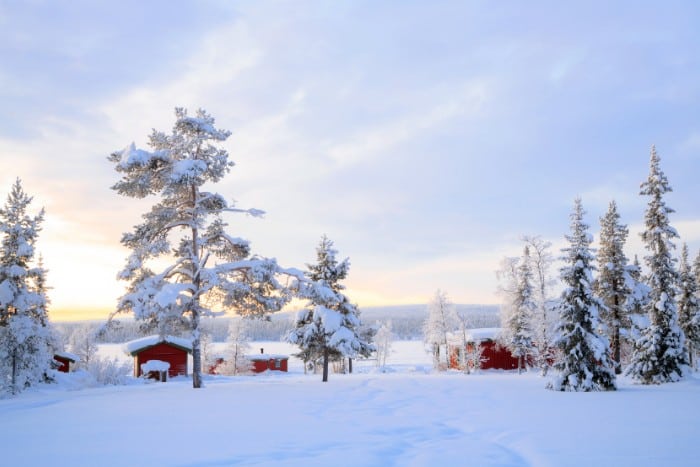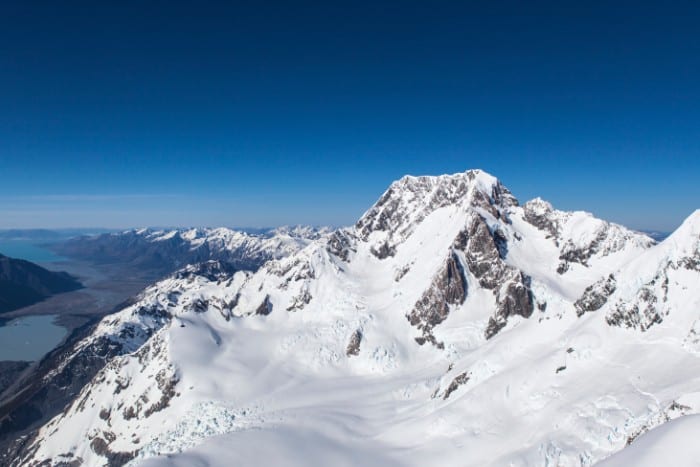As a sport that’s limited by weather conditions, unfortunately, snowboarding isn’t something that can be done all year round, at least not in the same location.
Whether you’ve just made the decision to take up snowboarding or have already caught the bug and can’t wait until the next season begins, it pays to know exactly when you can get started.
In the northern hemisphere, the snowboarding season usually starts in November or December, depending on the region and snow conditions. In the Southern hemisphere, the snowboarding season starts around the middle of June. Sometimes, resorts with glaciers or in the far north offer early start times.
Today’s article will explore the start times of snowboarding seasons worldwide, as well as some of the locations that are exceptions to the general rule that winter and spring are the only times you can ride.
What Time Of Year Does The Snowboarding Season Begin?
With a big clue in the name, snowboarding is a sport that requires snow, so the snowboarding season tends to start at the beginning of winter.
Having said that, it’s worth bearing in mind that different regions experience different weather patterns, so depending on where you are, the season may start earlier or later.
On top of that, snowboarding is possible in both the Northern and Southern hemispheres, meaning that winter falls on the opposite side of the year.
For those who love to snowboard all year round and don’t mind missing out on summer, this is a perfect opportunity to jump on a flight to the other side of the world to chase the snow.
Now we’re going to look at when the snowboarding season starts in the countries where snowboarding is most popular.
While it would take too long to list every resort, most resorts within a country have similar start dates; firstly, because they tend to share the same meteorological conditions, and secondly, to cater to the fact that most school breaks happen around the same dates.
Some resorts can open up their slopes a lot earlier in the year, with some barely shutting at all, but we’ll get to that later.

Northern Hemisphere
In the northern hemisphere, winter technically begins on the 21st of December each year, but ski resorts usually start getting sufficient snowfall for skiing and snowboarding earlier than this.
However, most resorts also offer pretty significant discounts on lift passes and accommodation if you visit as soon as they open as there’s no guarantee of amazing snow cover, and there’s a good chance some lifts and runs won’t be open, and there may not have been enough snow to build natural features in the terrain park.
1. USA
Most resorts in the USA open around the second or third week of November.
Using some of the most popular resorts as an example, in 2022, Killington in Vermont opened on the 18th of November, Breckenridge and Vail in Colorado opened on the 9th, and 11th of November, respectively, and even Heavenly in Lake Tahoe, California, opened on the 12th of November.
By the first week of December, out of the 56 most popular resorts in the country, 49 had opened by the end of November, with the remaining 7 due to open in the second week of December.
However, as we mentioned above, “open” doesn’t necessarily mean “ideal for snowboarding.”
In the first week of December, out of the 49 open resorts, the resort with the highest percentage of its groomed runs open was Big Sky in Montana, topping out at a meager 50 percent.
With that little snow cover, heading into the backcountry can also be risky if the powder isn’t yet deep enough.
On top of that, only Mt Hood Meadows in Oregon and NorthStar in California had their terrain parks open in the first week of December.

2. Canada
The ski resorts in Canada follow much the same pattern as those in the USA, with most resorts opening in the second and third weeks of November and the rest following by the second week of December.
Like the USA, a country as large and varied as Canada means different regions experience different weather conditions.
As a rule of thumb, the western provinces of British Columbia (home to the world-renowned Whistler Blackcomb resort) and Alberta (of Banff & Lake Louise fame) get more snow earlier in the season, especially compared to most of the resorts south of the border.
However, Toronto and Quebec are late to the party, and until mid-December, snow cover is poor.
On the terrain park front, Lake Louise usually manages to get its park open by the end of November, but the rest of the Canadian resorts typically have to wait a little longer, and the same goes for the halfpipes.
This is where we come to our first exception to the idea that the snowboarding season begins at the start of winter; Whistler Blackcomb has a glacier.
The advantage of a glacier is that due to its permanently icy nature, the snow that falls on it doesn’t melt away as quickly, and due to its elevation, they may even get a top-up of snow later in the spring or even early summer.
This is why advanced skiers and snowboarders can visit Whistler from early June to mid-July and still get some runs in with perfectly serviceable snow and blue skies.
3. Western Europe
While we gave the USA and Canada their own sections, each of those countries alone is almost comparable in size to the whole of Europe, and so a lot of the European countries and resorts have similar weather conditions to each other.
Compared to North America, resorts in Western European countries such as France, Austria, Switzerland, Italy, and Germany usually open later in the year.
While a handful will start opening their ski lifts in the last half of November, the rest usually hold off until the second week of December, which allows a brief period of peace before the Christmas vacation hordes descend on resorts across the region.
Exceptions exist for several reasons.
In France, for example, Flaine opens in the second week of November due to its unusually high snowfall, which can be attributed to the fact that it’s one of the highest points on the windward side of Mont Blanc, Europe’s tallest peak.
Val Thorens, part of the Three Valleys ski area, opens the following week because it’s situated at a lofty 7,500 feet, so the earlier snows stabilize sooner.
Europe also has more than its fair share of ski resorts with accessible glaciers, thirty-six in fact, so if you fancy a summer snowboard trip, spots like Cervinia in Italy, Zermatt in Switzerland, and Les Deux Alpes and Tignes in France will have you covered.
4. Northern Europe
While you’ll struggle to find much in the way of snowboarding in Denmark, the rest of the Scandinavian countries have a wealth of resorts to explore.
In fact, due to how far north they are, Norway, Finland, and Sweden can offer longer snowboarding seasons than almost anywhere else in the world.
In Sweden, most resorts open around the same time as resorts in North America, towards the end of November or the first week in December.
Norway is much the same; however, some resorts like Vrådal and Oppdal don’t close until the end of April, which is a few weeks later than the rest of Europe, and Hemsedal goes as late as early May.
Finland boasts even longer seasons than its neighbors; the snowboarding season in Levi starts in late October and runs until mid-May, whereas Ruka opens a few weeks earlier and is occasionally open as late as June.
However, while being so far north does offer the advantage of longer snowboarding seasons, it also has a unique drawback that you won’t encounter further south.
Due to the tilt of the Earth’s axis, the further away you get from the equator, the more daylight you get in summer and the less you get in winter.
In some places, this means you’ll only get around six hours of daylight, which will cut down on your snowboarding time.
In fact, Riksgränsen in Sweden, which claims the title of the planet’s northernmost resort, doesn’t open until February, as between November and January, the sun doesn’t rise at all!

5. Japan
A snowboarder’s Mecca when it comes to the hunt for the world’s best snow conditions, most of Japan’s resorts open early to mid-December and close up shop around mid-April.
However, there are a few notable exceptions that are worth mentioning.
First up is Kurodake. Not for the faint of heart, Kurodake is known for its steep, challenging runs that are only suitable for the sport’s most advanced practitioners.
The snow quality and quantity are superb, but the weather is highly unpredictable. During the height of winter, the ski area is temporarily closed for “maintenance” purposes each year.
However, the truth is that it’s likely closed to prevent riders from putting themselves in danger when the weather is at its worst.
If you ask a snowboarder whether there’s such a thing as too much fresh powder, they’d probably tell you, “no chance.” Well, it turns out there is.
Okutadami Maruyama may be a smaller resort, but it’s famous for its snowfall; in fact, it gets so much of the stuff that the resort is forced to close between January and March.
The good news is that the vast amount of snow means they can open a little earlier in the year, around mid-November, and extend their season until the start of May.
Gassan is another resort that gets an unbelievable amount of snow, to the point that they can’t even open up for snowboarding until April, when most other places are closing up for the year.
Although Gassan is a smaller resort that is better suited for splitboarding, they’re able to keep running all the way until mid to late July.
Southern Hemisphere
While the snowboard season in the Southern hemisphere is roughly the same length as it is north of the equator, the winter months fall on the opposite side of the year.
It may be worth noting that they still refer to the colder part of the year with shorter days as their winter and the hotter part with longer days as their summer.
So when exactly does the snowboarding season start in the Southern hemisphere?
1. Oceania
The most well-known snowboarding location in Oceania is New Zealand, down on the south island in a region called Otago.
Queenstown and Wanaka are packed with snowboarders all winter; while the conditions aren’t on par with North America or Europe, the ski culture certainly is.
While opening times vary slightly, resorts here open in mid-June and last until late September or early October, depending on the conditions.
Despite its reputation as a scorching hot landmass, the terrain of Australia is more varied than you may think, with downhill skiing and snowboarding an option between July and September in the states of Victoria, Tasmania, and New South Wales.

2. South America
Like Australia, plenty of people are surprised by the idea of being able to snowboard in South America before they set eyes on the wonders of Patagonia.
The region encompasses the southern tip of the continent, stretching across Chile and Argentina from the Pacific Ocean to the Atlantic.
In fact, Chile’s narrow width means it’s even possible to surf and snowboard on the same trip; technically, you can even do both in one day, with just a mere three-hour drive from the powdery slopes of the Andes down to the waves of the Pacific coast.
The snowboard season here normally starts in mid-June and lasts until early October; however, as always, there are sometimes exceptions.
During particularly strong El Niño weather cycles, bigger winters mean resorts may open as early as mid-May and run through until mid-October.
The Future
The start date and the length of any snowboard season depend on the snow conditions and temperatures.
The snow must start falling consistently at the right time, and the weather has to be cold enough to create a stable snowpack that can build up over the winter.
Some unpredictability is completely normal; you can visit the same resort at the start of the season year after year and experience a variety of conditions.
However, due to climate change, the predictability of snow conditions is changing more than ever and seasons are getting shorter rather than longer.
At the rate the climate is changing, resorts around the world are already starting to experience a decrease in the amount of potential snowboarding time each year.
Simply put, unless we start making dramatic changes to fight climate change, in a few decades, this article will be completely redundant.
Conclusion
Generally, snowboarding seasons in the Northern hemisphere start in late fall or early winter, between the middle of November and the middle of December.
In the Southern hemisphere, the season kicks off around mid-June.
However, there are always exceptions, as locations with heavier snowfall, usually those further north, can open earlier and close later in the year, and glaciers mean snowboarding can still be an option into the late spring or early summer.
As the opening and closing times differ between each resort, it’s best to check with the resort before booking a trip.
